Have a clear Opt-In process for new email recipients
Sending emails to people who have not provided clear permission to be emailed often leads to emails being reported as spam, which actively harms your sending reputaiton.Collecting the email as part of your sign up process or account creation is not enough. Consent needs to be explicitly given.
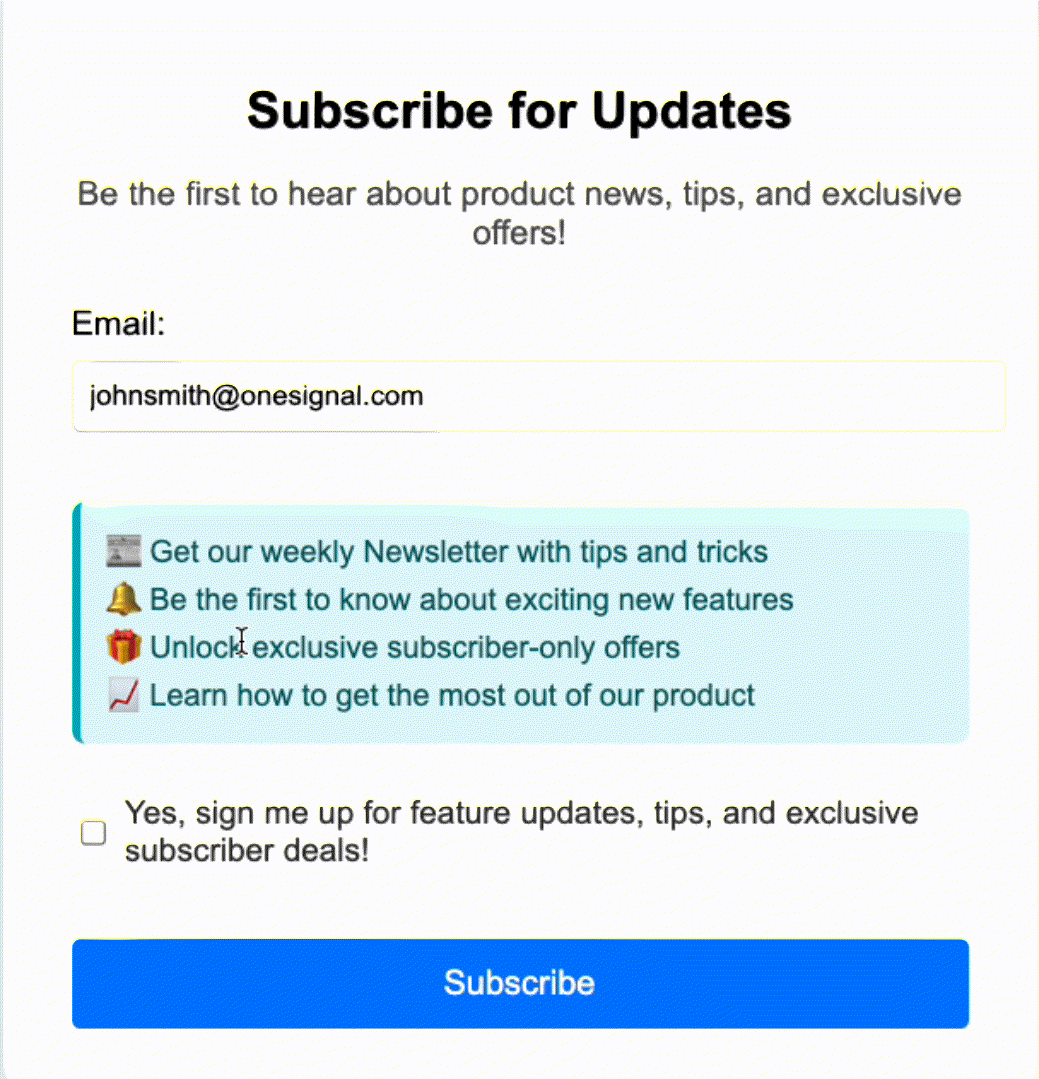
Opt-in Check Box
Implement a “Confirmed Opt-in” or “Double Opt-in”
A confirmed or double opt-in process requires the recipient to confirm their interest by clicking a link in a confirmation email. This method:- Increases engagement
- Verifies compliance (e.g. GDPR, CAN-SPAM)
- Filters out fake or mistyped addresses
- Reduces complaint and bounce rates
- Prevents abuse and list bombing
Learn how to create a Confirmed Opt-in Journey.
Learn how to create a Confirmed Opt-in Journey.
1
Create an `initial_opt_in` tag
Add an
initial_opt_in tag with a value of true for newly added or imported email subscriptions.2
Create an Initial Opt-in segment
Create a segment called 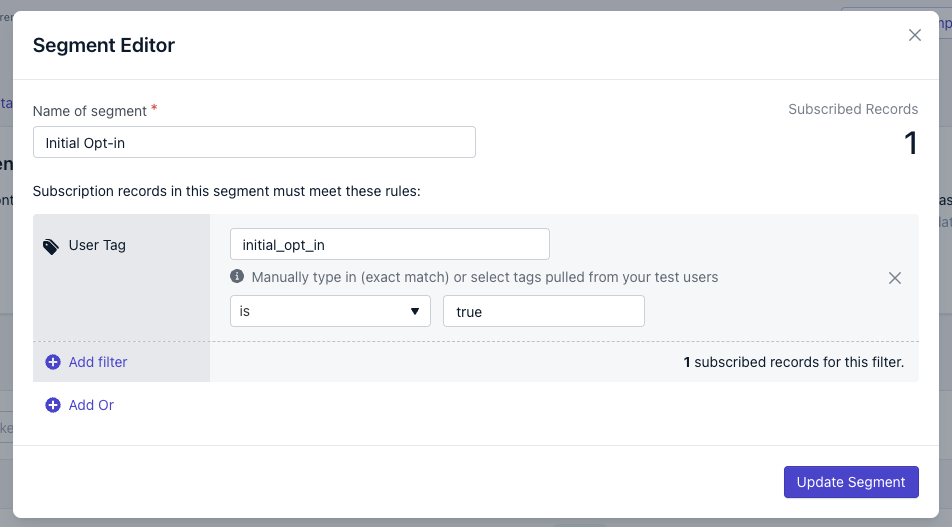
Initial Opt-in using the initial_opt_in tag.
Initial Opt-in Segment
3
Create a Confirmed Opt-in email template
Create an email template with a single “Confirm” button or link.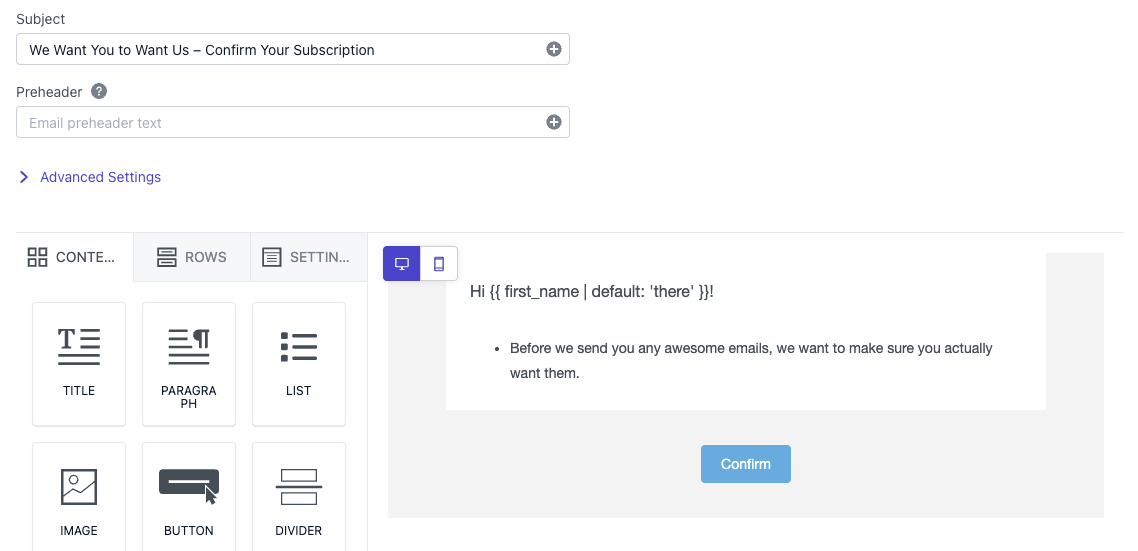

4
Create a Confirmed Opt-in Journey
Build a Journey that starts with the Initial Opt-in segment and immediately sends the confirmation email.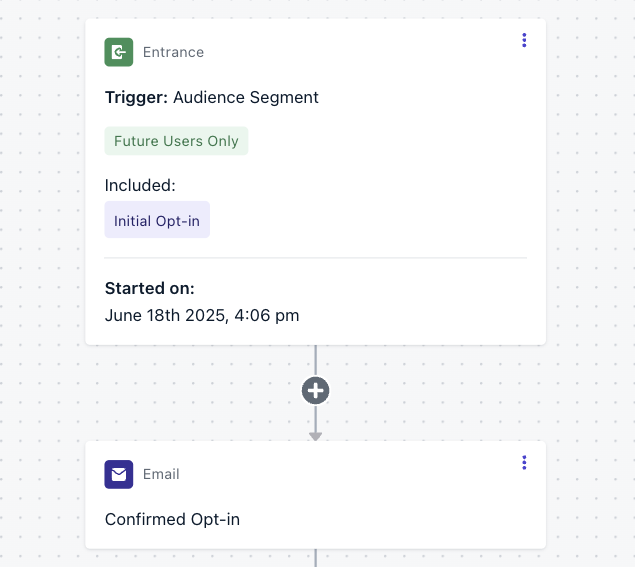

Confirmed Opt-in Journey Send
5
Add a Wait Node and Yes/No Branch
Add a 15-minute Wait node followed by a Yes/No branch to check if the confirmation link was clicked.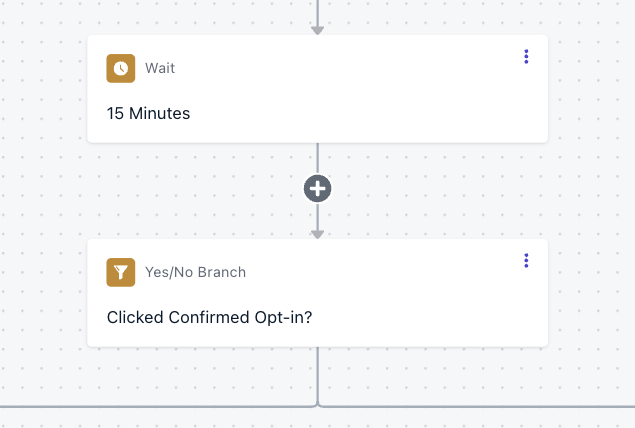

Wait Node and Yes/No Branch
6
Tag users who confirm
Tag users who clicked the confirmation link with 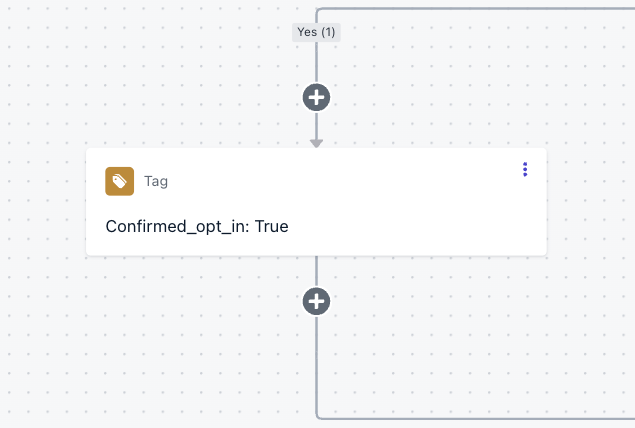
confirmed_opt_in = true.
Confirmed_opt_in Tag in Journey
7
Add additional follow-ups
Add Wait nodes and Yes/No branches to retry confirmation over several days.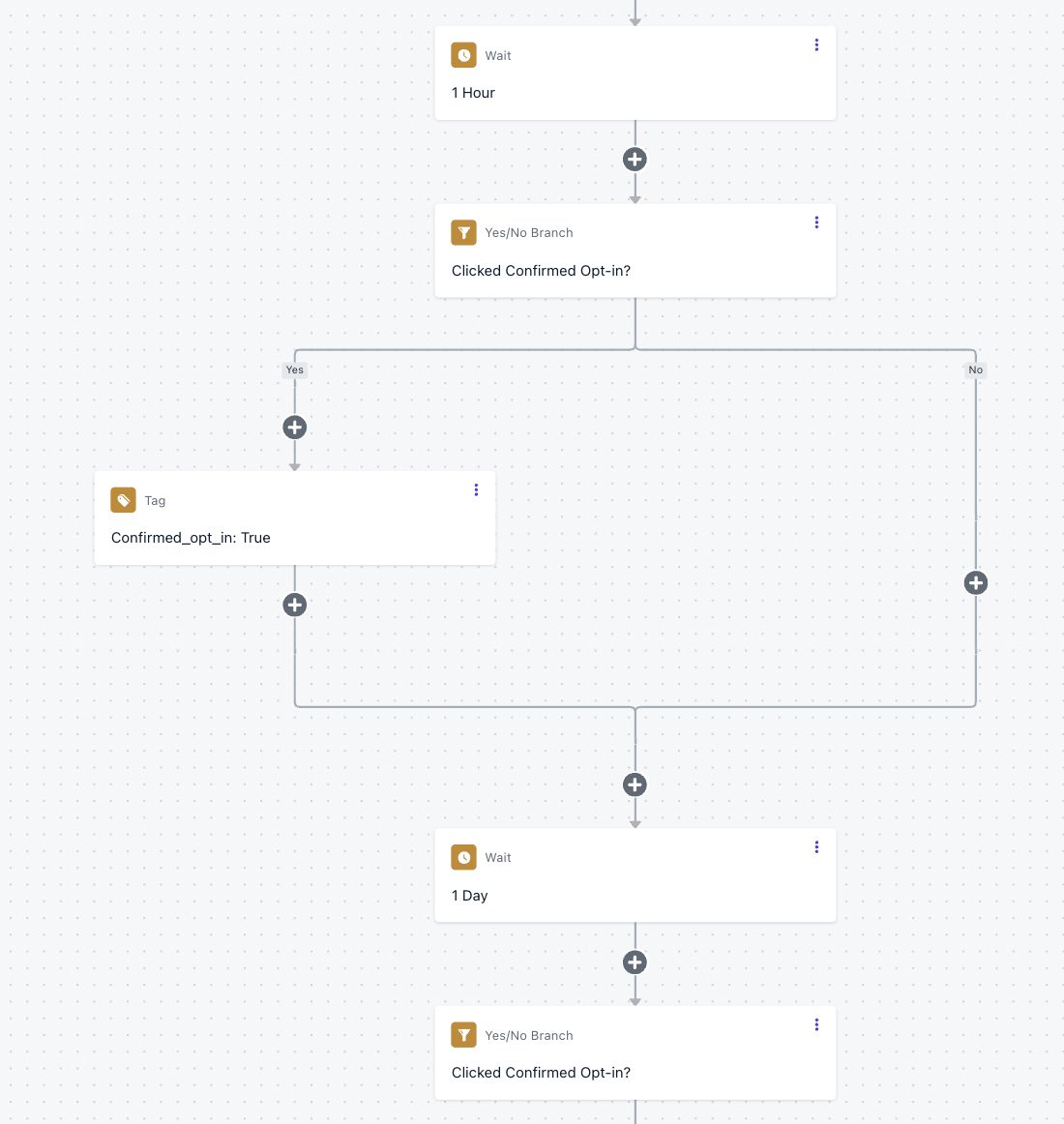

Check for Confirmed Opt-in at Intervals
You now have email subscribers with a
confirmed_opt_in tag that you can use to create segments.Offer email preferences
Let users choose what types of emails they want—Newsletters, Rewards, Deals, Product updates, etc.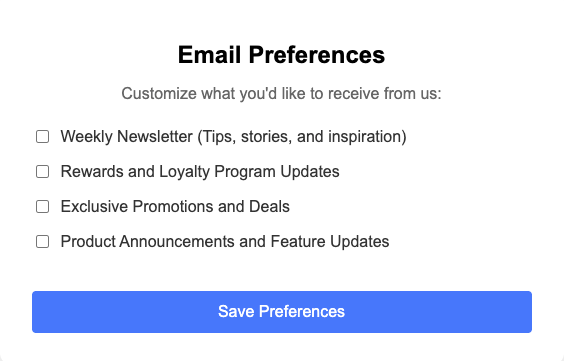
Email preference center
Monitor spam reports and complaints
Unchecked spam reports can quickly destroy your sending reputation. Monitor them closely—more often than open or click rates. You can view Spam Reports in the Audience Activity section of each message and in your Suppression List.Consider why users might report your emails as spam:
- Did they disengage over time?
- Did they knowingly opt in?
- Were they sent too many emails?
- Was the content aligned with their expectations?
Use Google Postmaster Tools
Gmail is the largest inbox provider. If you’re seeing issues with Gmail, you’re likely having issues elsewhere too. Google Postmaster Tools gives insights like domain reputation and spam rates from Gmail users.Gmail does not provide per-user spam reports. Only aggregate spam rate data is available through Google Postmaster Tools.
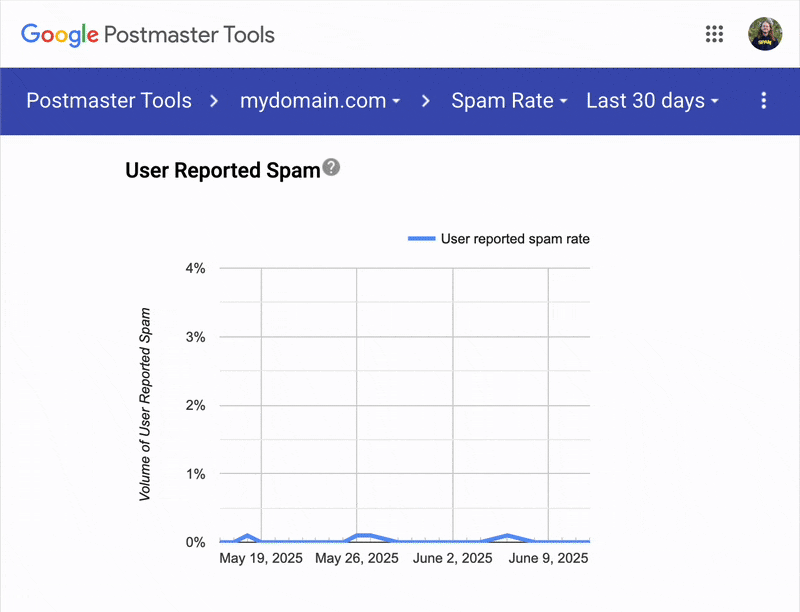
Google Postmaster Tools
Target engaged recipients
Inbox providers reward high engagement. Recipients who open and click are more likely to receive future emails.- Use Yes/No branches in Journeys to send follow-ups based on open/click behavior.
- Stream email events to your data warehouse or CRM for analysis.
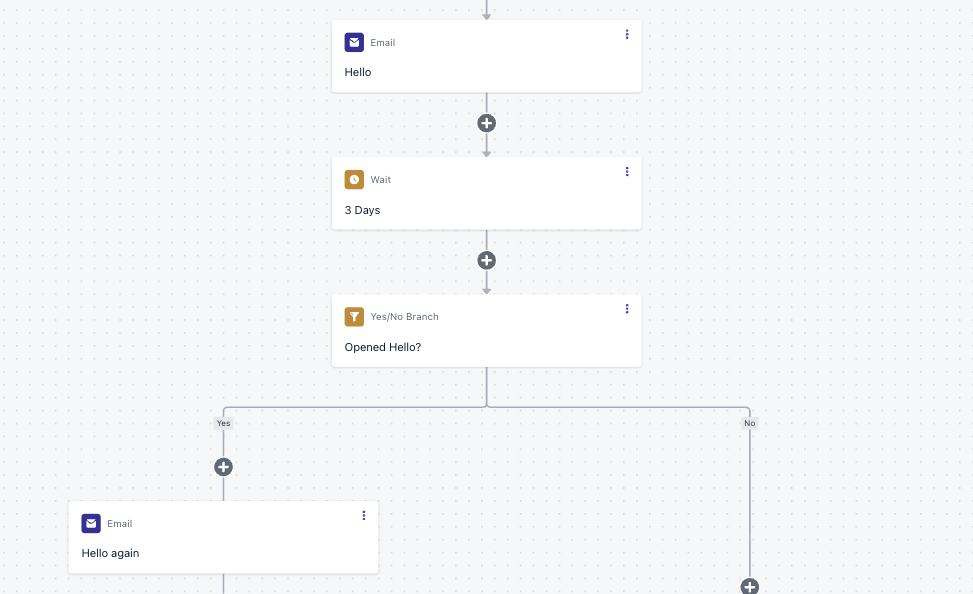
Email Opened Yes/No Branch
Exclude or sunset unengaged recipients
Low open rates indicate poor engagement and hurt your reputation. Implement a sunset policy to remove users who haven’t opened or clicked emails in 2–3 months (depending on your send frequency).Do not send excessive emails
Sending too many emails increases the risk of unsubscribes and spam complaints. Evaluate frequency from the recipient’s perspective. Daily emails may be too much.- Use Wait Nodes and Yes/No branches to manage frequency based on engagement.
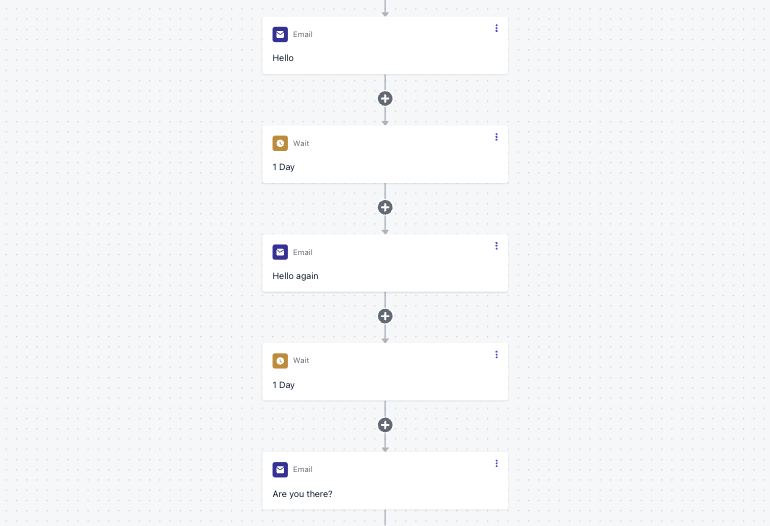
What NOT To Do
Deliver value, not just promotions
Every email should provide real value—insights, tips, solutions, or relevant updates. A discount code alone does not equal value.Evaluate content performance
Your audience expects specific content types. Make sure you’re meeting those expectations.- Use multi-link tracking to learn what content is most clicked.
- Run A/B tests to see what resonates.
Use email to build relationships and get feedback
Email is a conversation channel—not a billboard. Use it to build trust and invite responses. Replies actually help your sending reputation.Use a valid reply-to address. Avoid “no-reply” emails.
Ensure proper warm-up
Inbox providers may block high-volume email sends from domains with no sending history. If you’re sending large volumes—especially from a new domain or provider—gradually increase volume to build trust. Learn more about Warm Up and how to use OneSignal’s Auto Warm Up.Avoid invalid emails
High bounce rates hurt your reputation and indicate poor list hygiene. Use Confirmed Opt-in to prevent invalid emails. Before importing, clean your list by removing:- Obvious typos like
@gnail.com,@yagoo.com - Incomplete or malformed emails like
someone@.com